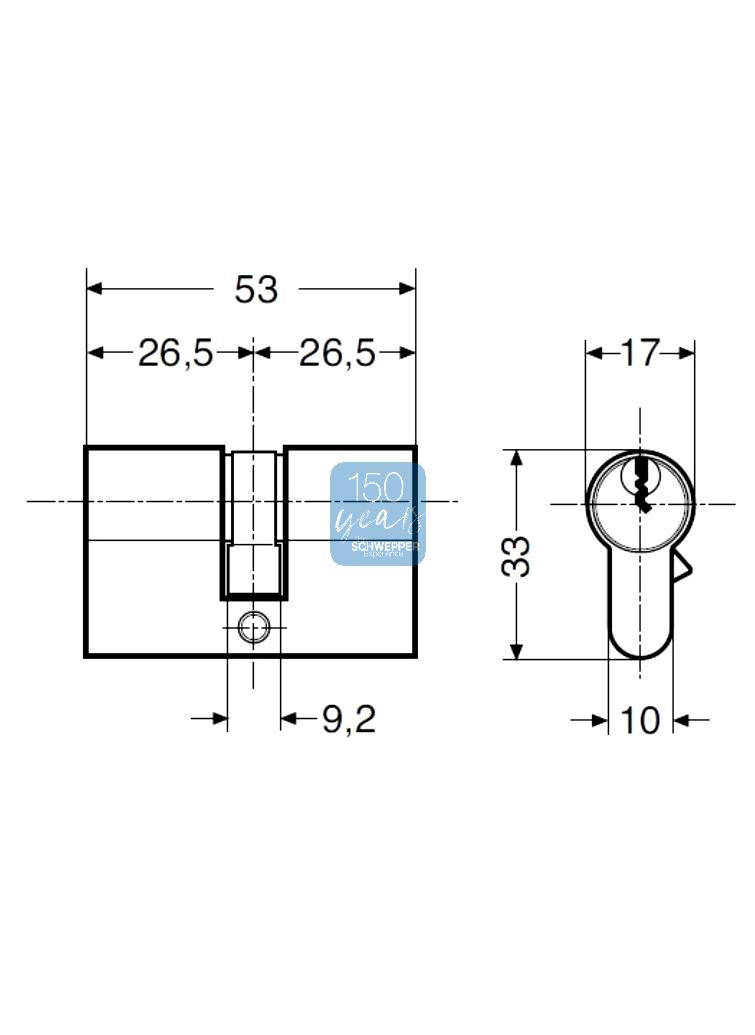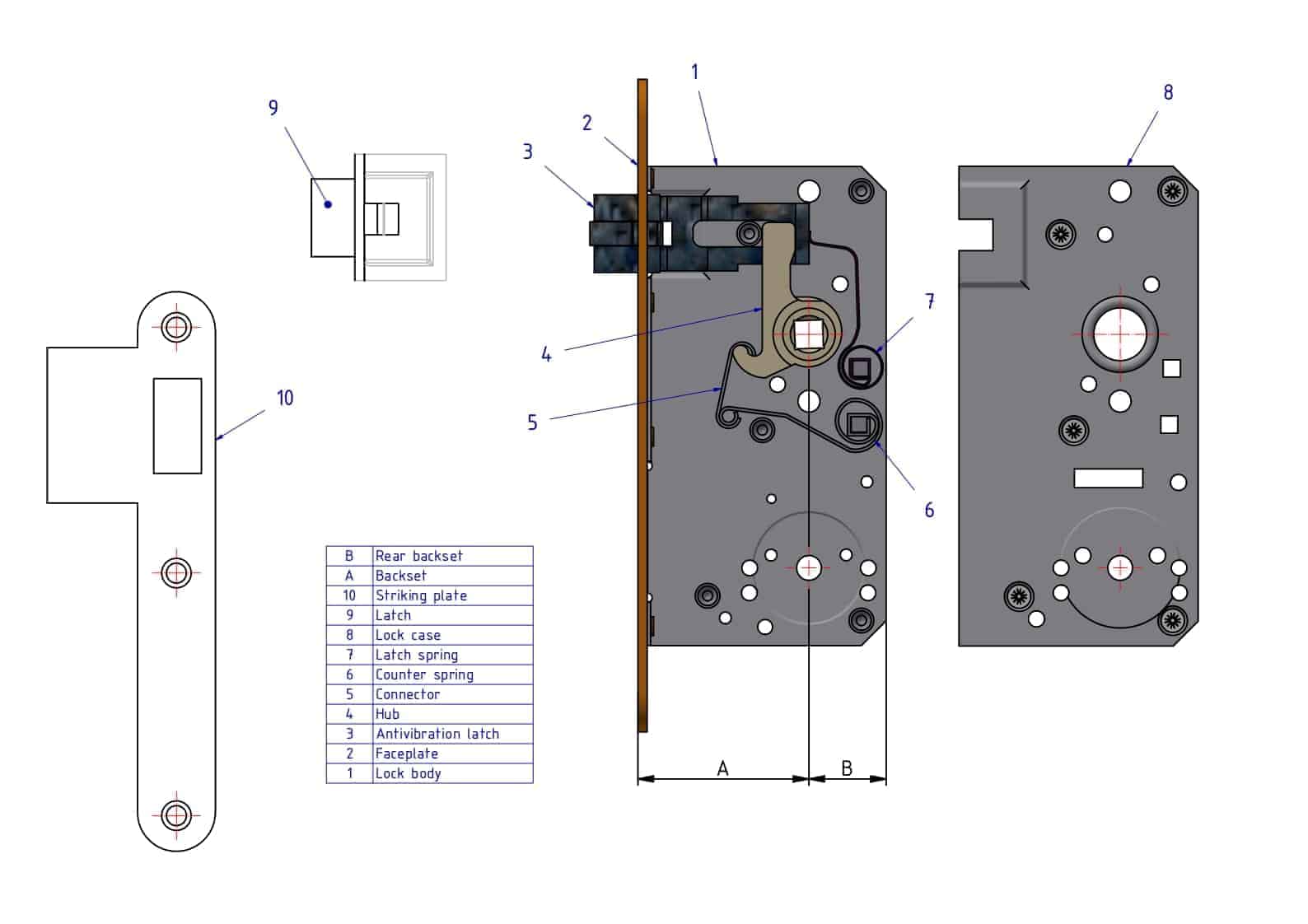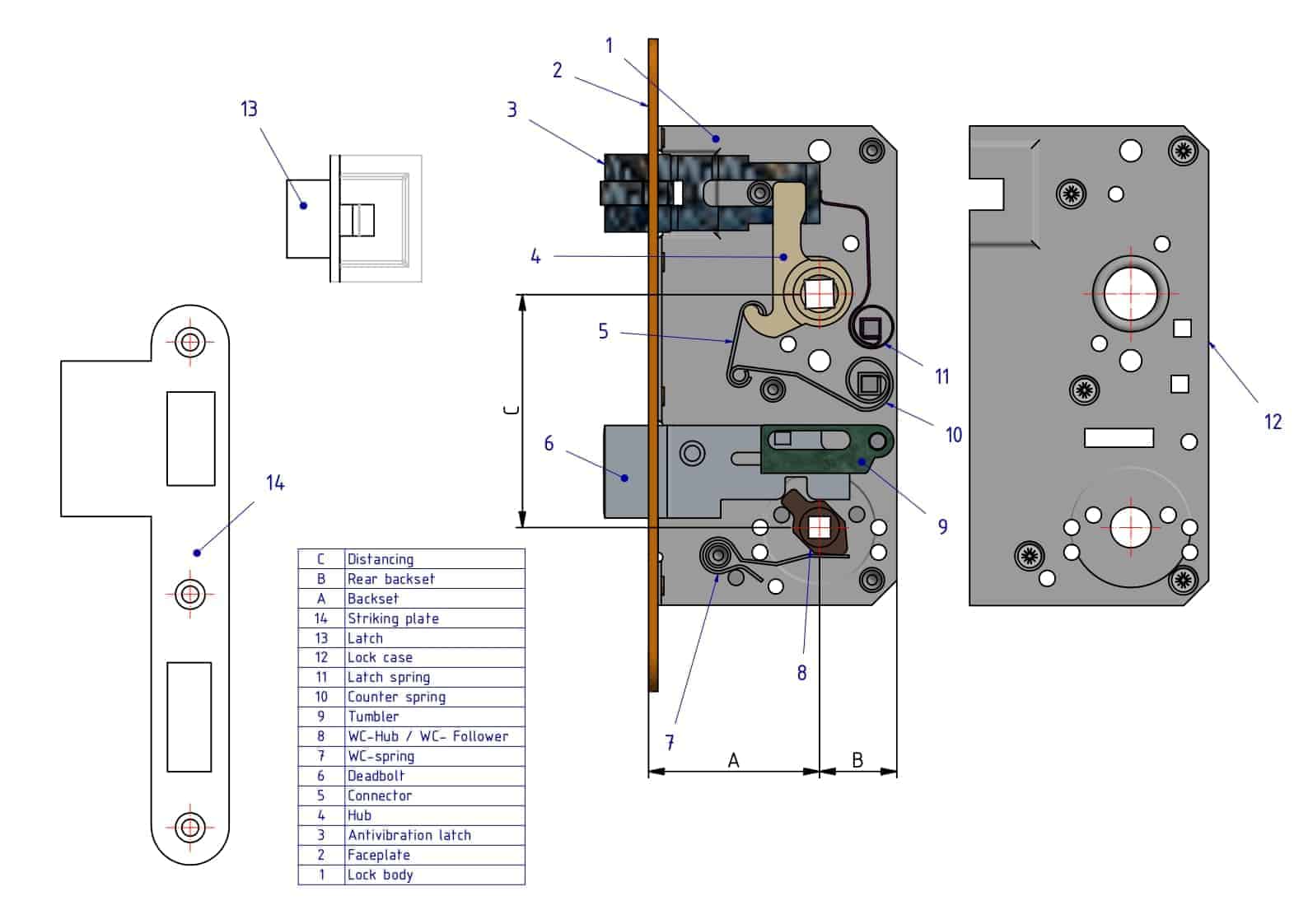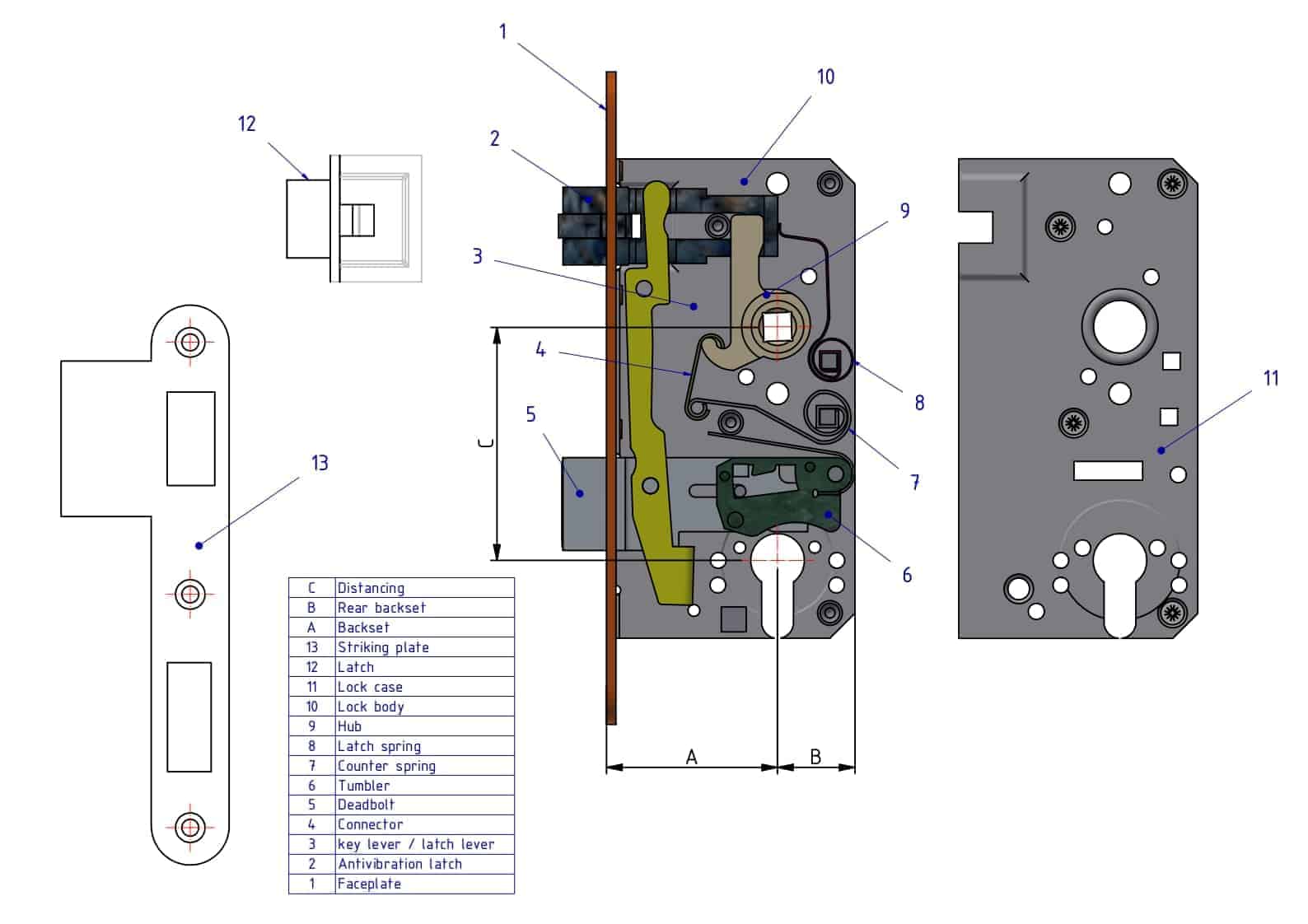
Short double cylinder seawater resistant type 60 / 26,5 with emergency function Brass | GSV-No. 354
3. March 2019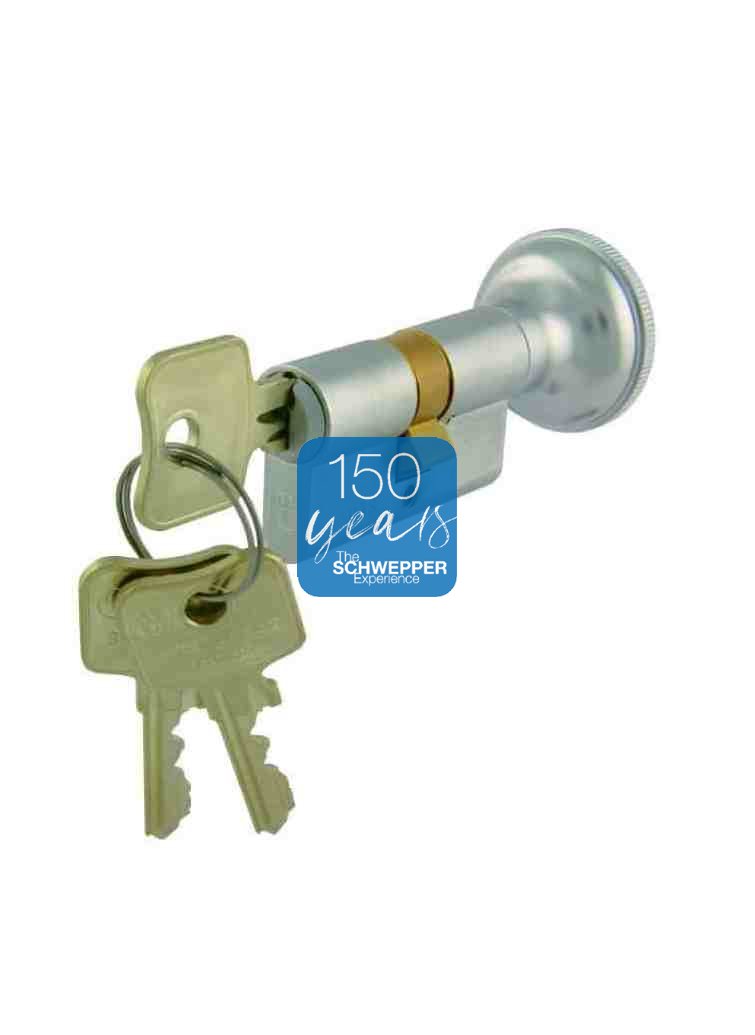
Short thumbturn cylinder seawater resistant type 60 / 26,5 Brass | GSV-No. 383
4. March 2019Short double cylinder seawater resistant type 60 / 26,5 Brass | GSV-No. 353
SKU: 353
Standard product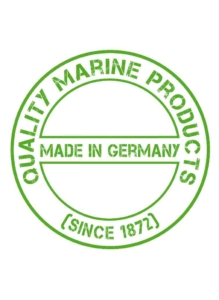

Short double cylinder 60 / 26,5
GSV-No. 353
Brass
| Weight | N/A |
|---|---|
| Product class | |
| HS-Code | |
| Sales unit |
General note: the general delivery times as stated below can deviate in certain cases due of supply shortages!
Brass:
• The general delivery time for products in brass satin chromed is currently 6 weeks
• The general delivery time for products in brass polished / brass polished chromed is currently 8 weeks
Stainless Steel:
• The general delivery time for products in stainless steel is currently 4 weeks
• The general delivery time for products in stainless steel polished / fine grind is currently 6 weeks
Aluminum:
• The general delivery time for products in Aluminum silver andodized is currently 4-6 weeks
• The general delivery time for products in Aluminum powder coated is currently 6-8 weeks
 Note on express dispatch | 24 delivery service
Note on express dispatch | 24 delivery service Each item with a stock quantity can be dispatched within 24 hours. The surcharge for the 24h delivery service is 5%.
 General info on seawater resistant profile cylinders / new order or replacements
General info on seawater resistant profile cylinders / new order or replacements - Cylinders come with 3 keys of nickel-silver
- with brass locking cam 9,5mm. Note: for locks 4040Z | 969 Z | 1069 Z with brass locking cam 7,7mm!
- All product by OEM brand WILKA
- Integration of cylinders for cabinet locks possible:
Profile cylinders and cylinders for cabinet locks with Ø23 mm can be operated with the same keys from kleying system for profile cylindders, if the cabinet lock cylinders have a length of 30 mm. Hence an integration of cylinder for cabinet locks and profile cylinders is possible. - Options for keying systems:
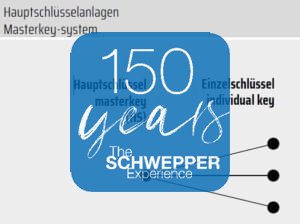
click to enlarge Masterkey-System |
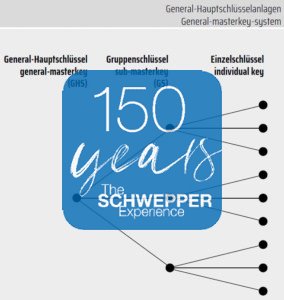
click to enlarge General-Masterkey-System
|
- Key plans facilitate easier handling of repeat orders of cylinders and
keys. It will be provided for every order of cylinder locking systems on
basis of the customers plans prior sent to us. A template can be downloaded in the downalod tab. - Since January 1 / 2016 new cylinder locking systems will be supplied
without Security Certificate. Repeat orders will be accepted upon
mentioning the complete number of the respective locking system. (For
existing installations supplied prior to this date, it is still necessary to
provide the Security Certificate to get offers and/or deliveries). - For higher safety requirements and on special request, from this date
on cylinderlocking systems are available based on the protected /
patented SI6 profile with Security Certificate.
Only the holder of this certificate is entitled to place inquiries and
orders. Key blanks will not be provided for the duration of the patent protection.
Our products do not contain the following chemical hazardous substances:
| Substance |
|---|
| Asbestos |
| Polychlorinated biphenyls (PCBs) |
| Chlorofluorocarbons (CFCs) |
| Halons |
| Other fully halogenated CFCs |
| Carbon tetrachloride |
| 1-1-1-Trichloroethane |
| Hydrochlorofluorocarbons |
| Hydrobromofluorocarbons |
| Methyl bromide |
| Bromochloromethane |
| Anti-fouling systems containing organotin compounds as a biocide |
| Cadmium and cadmium compounds |
| Hexavalent chromium and hexavalent chromium compounds |
| Lead and lead compounds larger 3% |
| Mercury and mercury compounds |
| Polybrominated biphenyl (PBBs) |
| Polybrominated dephenyl ethers (PBDEs) |
| Polychloronaphthalenes (Cl >= 3) |
| Radioactive substances |
| Certain shortchain chlorinated paraffins |
| Perfluorooctane sulfonic acid (PFOS) |
| Brominated Flame Retardant (HBCDD) |
QR Code

What are the general handings of a door?
Answer: Mortises
The hand of door for mortise locks is defined as:
if the door is closed and the hinges are visible on the right/left, then the door is right/left hand. The door is therefore hinged on the right/left and according by definition of DIN right/left.
Or: if you grasp the handle with your right hand and latch and deadbolt show to the left, then it is right hand. If you grasp the handle with your left hand latch and deadbolt show to the right, it is a left hand.

Rim locks
The hand of door for rim locks is defined as:
if the door is closed and the hinges are visible on the right/left, then the door is right /left hand. The door is therefore hinged on the right/left and according to the definition DIN “right/left".
In addition to the designation “left” and “right”, it is to be indicated whether the locks are intended for inward or outward opening doors.

Sliding door mortises
The hand of door for sliding door mortises is the same for right and left. Sliding rim door locks different for left and right doors.
When ordering, always indicate “left” or “right”.

What are the essential components of a lock?
Answer:
| Latch
The lock latch keeps the door shut. In order to open the door, it must be retracted. |
| Type of latch design | Illustration |
| single latch | 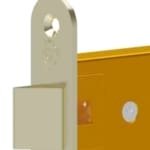 |
| anti-vibration or three-piece latch | 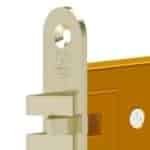 |
| rolling latch adjustable | 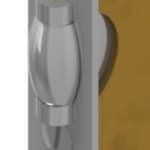 |
| POM-latch for strike dampening | 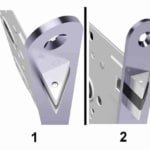 |
| Deadbolt
The deadbolt regulates the access rights through the turning motion of the cylinder by key. The deadbolt is being driven out or retracted through the turning motion. |
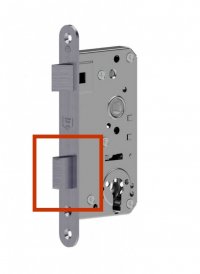 |
| Faceplate
The faceplate is the visible part of the lock case. The faceplate, the latch and the deadbolt are the only visible parts of a mortise. |
 |
Handle hub
The handle hub takes the square spindle of the handle in order to retract the latch inside the lock through the turning motion of the same. This process allows the opening of the door. The shipbuilding norm specifies a 9mm square with a 2° incline. Schwepper supplies also with 8mm square, special contour or 0° incline on request. |
 |
WC-/privacy hub
The WC hub takes the square spindle of the olive or thumb turn, that retracts or drives out the deadbolt from the inside - analogue to the turning motion of the cylinder. The shipbuilding norm specifies a 7mm square. Schwepper supplies also with 8mm square on request. |
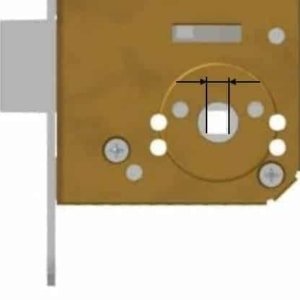 |
What are the essential dimensions of a lock?
Answer:
| Dimension | Illustration | |
| Backset
The backset is the distance from the front edge of the faceplate to the center of the cylinder hole respectively handle hub square. The rear backset behind the center line remains always 27mm. |
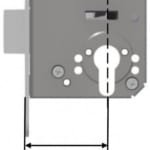 |
|
| Distancing
The distancing is the dimension from the center of the handel hub and the center of the hole for profile cylinder / privacy (WC) / key. The industry standard in shipbuilding is 75mm. |
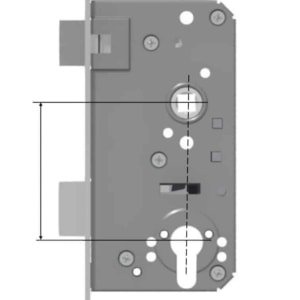 |
|
| Latch protrusion
The latch protrudes according to the industrial DIN standard in shibuilding 14mm. Other technical standards for latch protrusion are: 16 mm according to DOT (Department of Transportation) 19 mm according to USCG (US Coast Guard) |
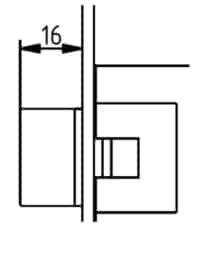 |
 |


